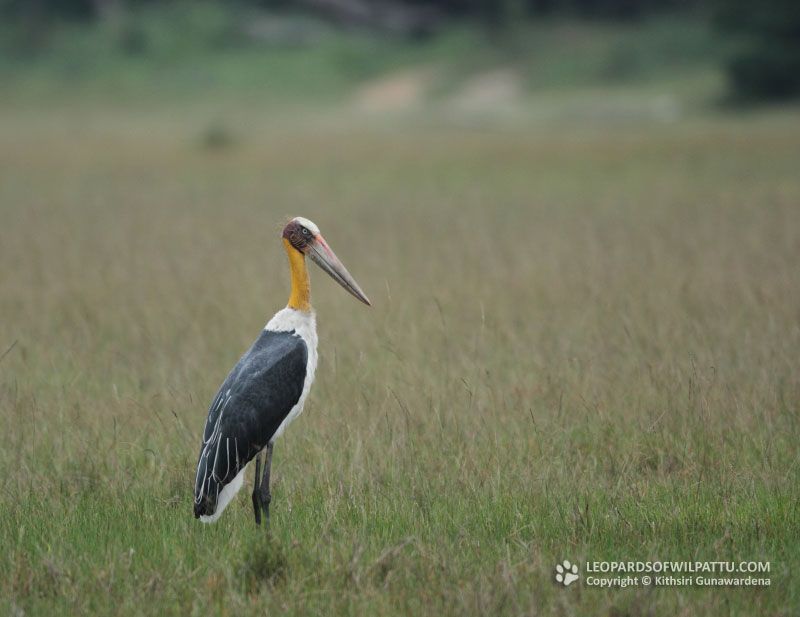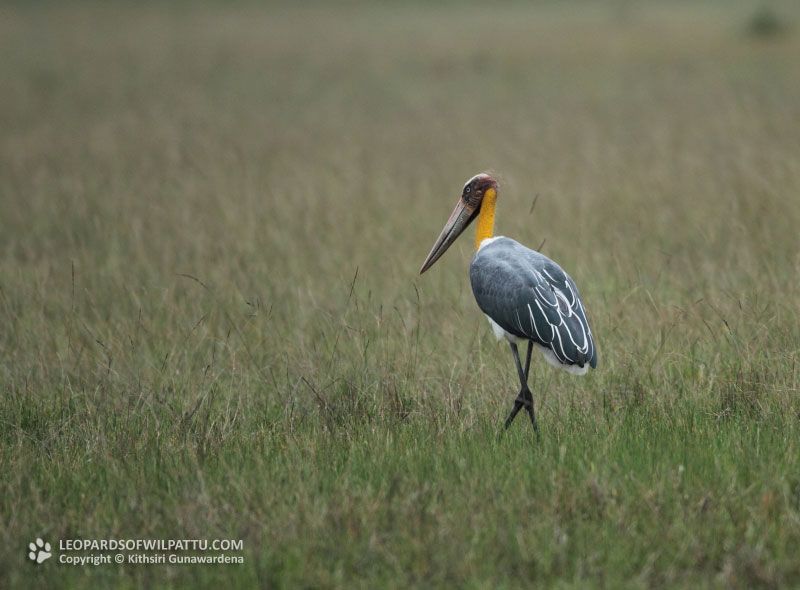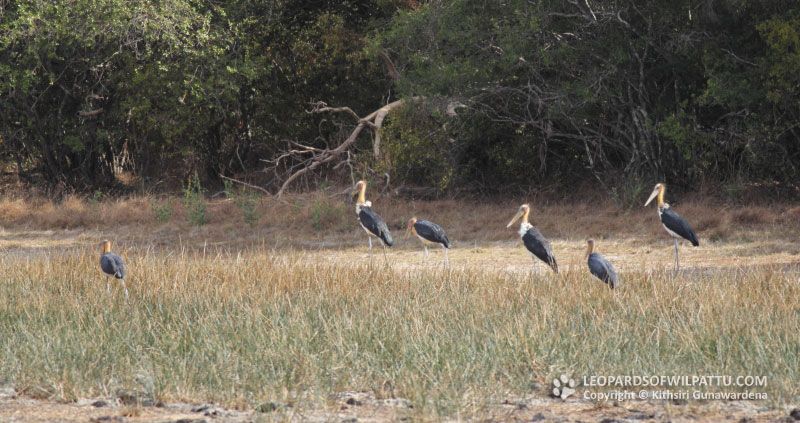
Birds ‹‹ Go Back
This is the second largest species of stork in the country and is generally found in water bodies close to or surrounded by forest. Other than Sri Lanka it is also found in India, Bangladesh, Myanmar, Thailand, Vietnam, Malaysia, Laos, Singapore, Indonesia and Cambodia. The conservation status of this species is regarded as Vulnerable (National Red List 2012) and is strictly protected under the Fauna and Flora Protection Ordinance as amended by Act No. 22 of 2009.
This is essentially a bird of the dry lowlands and has never been reported from the wet zone or the hills. Other than Wilpattu I have observed this bird at Udawalawa, Yala, Kumana, Bundala, Lunugamvehera, Galoya, Wasgomuwa, Maduruoya, Lahugala, Minneriya and Kaudulla national parks. In the north I have never seen this bird in the Jaffna peninsular or the Mannar island but observed it in the vast lagoon at Vidaththalthivu, north of Mannar.
Eventhough the Lesser Adjutant is known to breed in the country and young birds have been observed on many occassions, no one has been able to study its nesting behaviour, as a nest is yet to be found in Sri Lanka. Outside Wilpattu the highest number of this species that I have encountered at one site has been 6 birds in Wasgomuwa National Park (December 1998), 13 at Lahugala National Park (September 2002) and 6 at Minneruya National Park (July 2003).
In Wilpattu, however on the 2nd of September 2012, during the hight of the drought, I counted 17 birds at the Maradanmaduwa tank and on the 30th of the same month I observed a rare congregation of 23 birds at the same locality which happens to be one of the highest counts of this rare species that had been reported in the country. Throughtout the year one or two of this species can be observed at most water bodies at Wilpattu. Manikkapola Uttu is a location that is generally prefered by this species and a few birds are usually seen feeding among the reeds during the greater part of the day. Undoubltedy Wilpattu is a key stronghold for the survival of this species.



